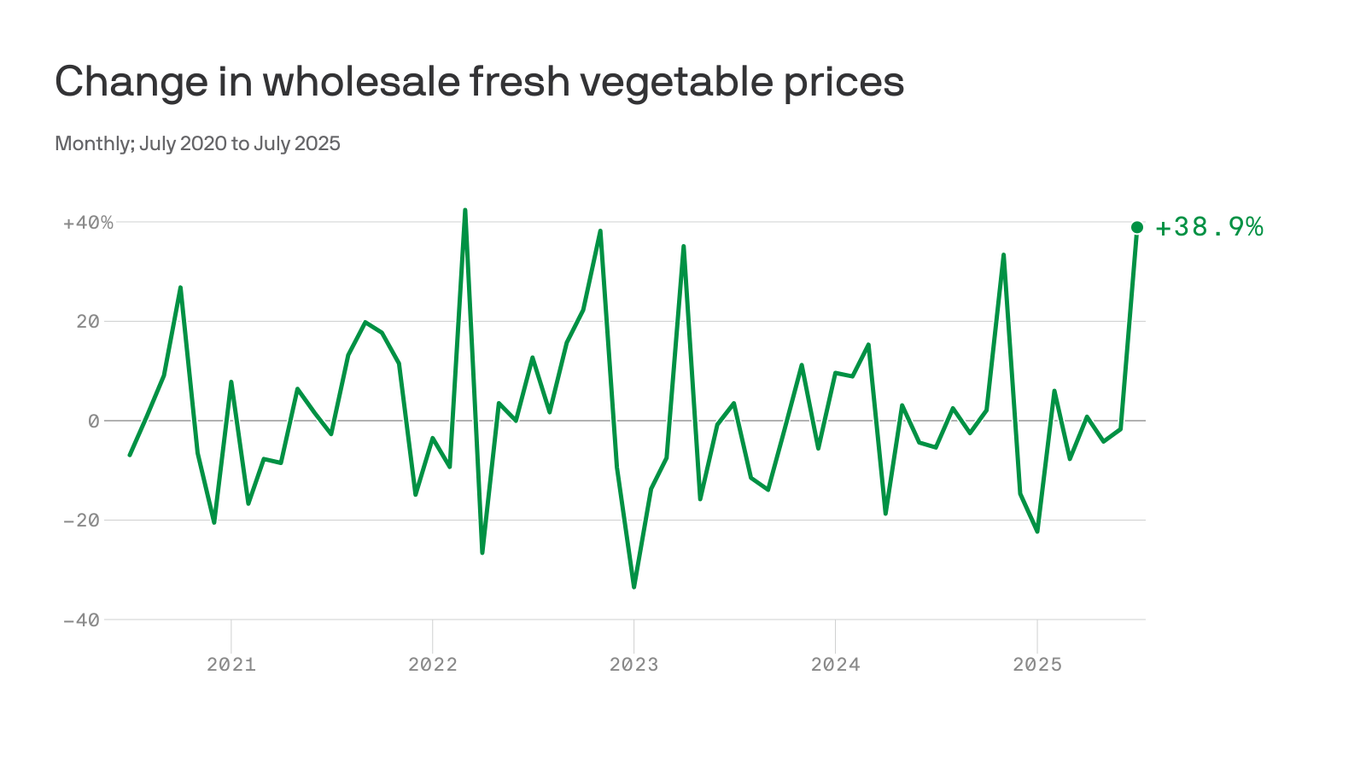Veggie-flation strikes, with a warning for grocery prices

The U.S. economy has a vegetable problem, and it's not just "broccoli refusal" either — wholesale prices for fresh veggies soared by a record amount last month, foreshadowing a possible spike at the grocery store soon. Why it matters: If the last few years have taught us anything, it's that the "real" statistics on inflation don't matter when consumers see the prices of tangible, everyday goods — food, gasoline, etc. — rising sharply.
How it works: The Producer Price Index (PPI) for July rose at the fastest clip in three years, far more than economists expected. Zoom in: A 38.9% increase in prices for fresh and dry vegetables from June to July was the major driver of a higher index for "final demand goods" (things that are done and ready to be sold to a consumer, as opposed to things that go into a later production process). Stunning stat: Per Bureau of Labor Statistics data, it's also the largest monthly increase ever recorded in a summer month (June-August), in figures that go back to 1947. What they're saying: "Because of the import situation, because we get most of that produce across the border, and they're imports, the tariffs have a lot to do with that," Phil Kafarakis, the president and CEO of IFMA The Food Away From Home Association, tells Axios. Between the lines: There's no guarantee that one month of rising prices will inevitably pass through. But it's another risk factor that suggests the long-awaited consumer tariff pain could be coming sooner than later. What to watch: Kafarakis notes that when the harvest cycle kicks in, there may not be enough farm workers to pick all the domestic produce, on top of the weight of tariffs on imported products.